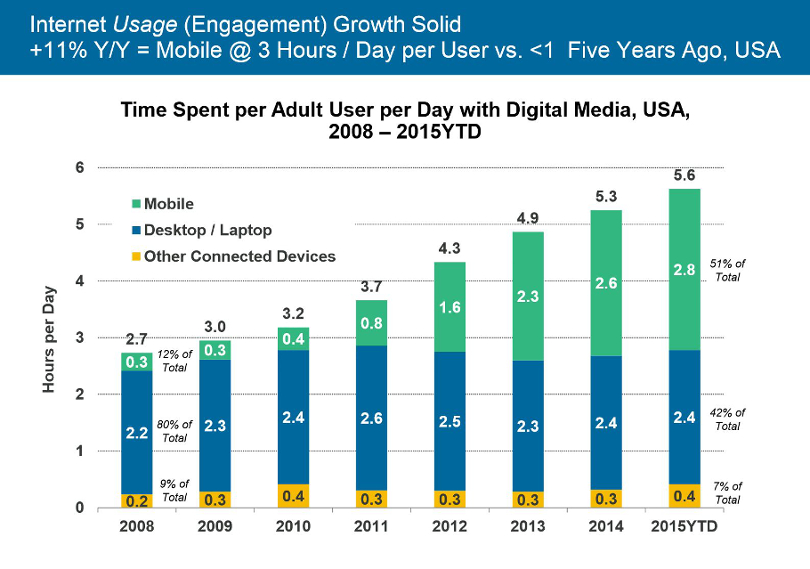2015 marks the first time mobile devices become the primary means of connecting to the Internet with 51% share, according to venture capital firm KPCB. That figure was 12% in 2008, just as smartphones with big screens were beginning to take off.
Smartphones have been around for more than a decade, but the real recipe for a smartphone was struck around 2007 with the iPhone. Before then, smartphones had QUERTY keyboards and Internet connectivity was painfully slow. Worse still, mobile Internet was ugly and completely unusable. Ten years ago we used WAP on 128-pixel screens to download wallpapers no heftier than 10Kb apiece. Today, we can download a 4MB photo with two taps, no questions asked.
So, how did we get from never touching our mobiles for Internet purposes to predominantly using our mobiles for Internet access? KPCB doesn’t offer an explanation – it just gave the world the numbers and went back to being a VC. But if we were to guess for ourselves, we’d say it has to do with:
- capacitive touchscreens
- full-blown Internet (not a crippled version like WAP) in mobile format
- 4G/LTE speeds
- free WI-Fi at every corner
- all-day battery life
- entire gigabytes of on-board storage
- cloud services
- maps / GPS
- app stores (as opposed to ‘WAP’ stores)
- tablets
- social networks…
… and the list could go on. Back in 2008, most of these technologies / services were either nonexistent, in their infancy, or spread across different (specialized) devices. In 7 years time, mobility has grown from a luxury to a fact of life, affordable by anyone and everyone. With the Internet of Things (IoT) upon us, 51% percent will sound like a small number by 2020. Full KPCB report here.

Post A Reply